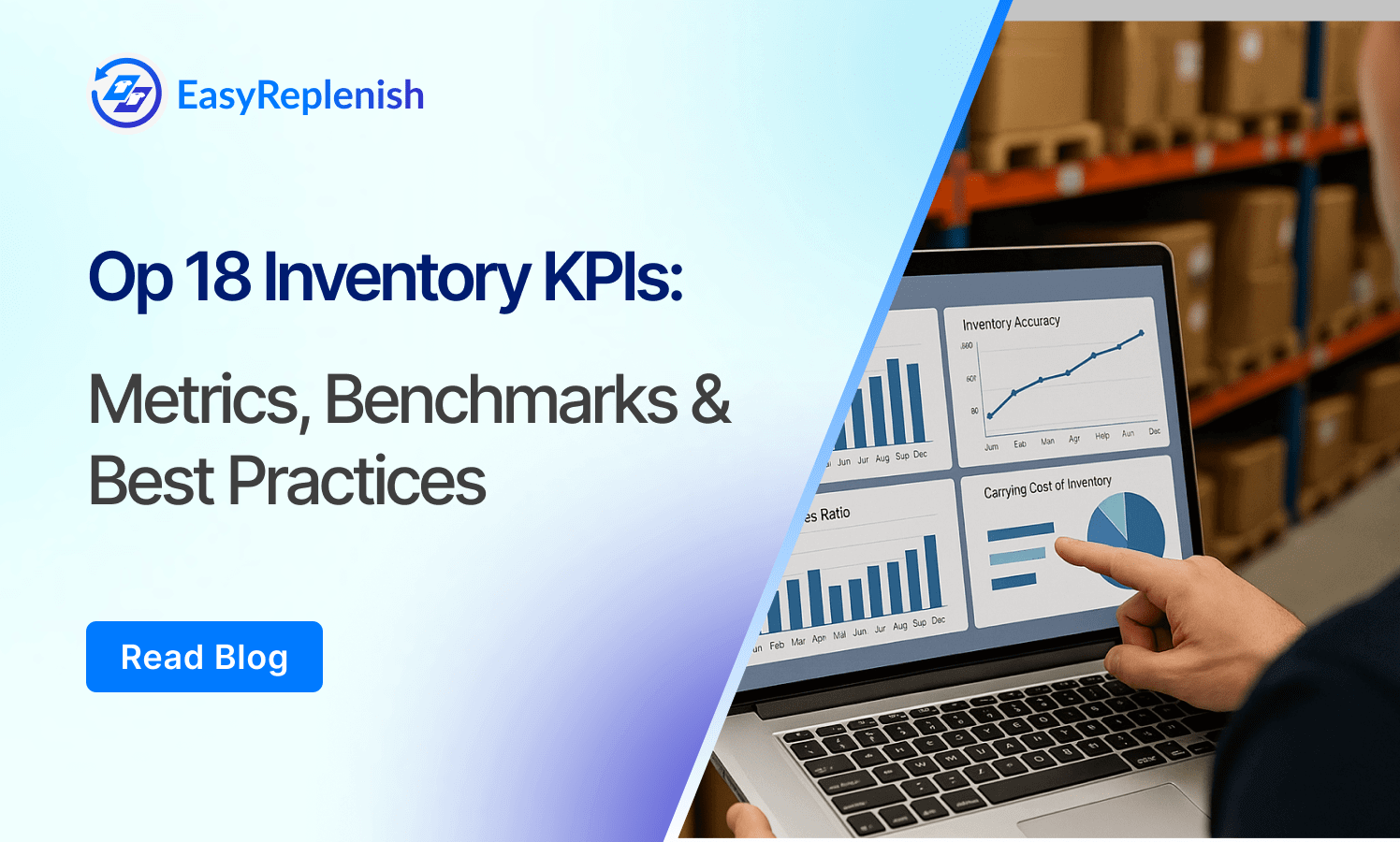Multi-Style & Size Inventory Planning for Apparel

Inventory planning in apparel isn’t just about how much to stock—it’s about what to stock, in which style, size, and color, across multiple locations and sales channels. A single product design can quickly explode into dozens of SKUs when you factor in size ranges, colorways, and regional demand. For growing fashion brands, this complexity often leads to either overstocking on slow-moving variants or stockouts on popular sizes.
This blog breaks down the intricacies of multi-style and size inventory planning in apparel, covering the core challenges, key planning models, proven strategies used by leading brands, and the AI-powered tools that can help improve accuracy, speed, and sell-through. If you’re struggling with variant-level forecasting or feel like your inventory is always out of balance, this guide is for you.
Why Multi-Style & Size Inventory Is Complex in Apparel
Apparel brands manage one of the most SKU-intensive inventory models in retail. A single t-shirt design, for example, can generate 20–30 SKUs when offered in five sizes and four colors. Multiply that by seasonal drops, new collections, and regional variations, and you’re suddenly managing thousands of SKUs—many of which sell at different rates and have different fulfillment patterns.
Key factors that make apparel inventory complex:
- SKU proliferation: Every new style multiplies into variants by size, color, and sometimes fit. Managing inventory depth across all combinations becomes a balancing act.
- Asymmetric demand: Not all sizes or colors sell equally. Medium may be a top seller, while XS or XXL barely move—but both tie up capital.
- High return rates: Especially in D2C apparel, returns due to fit issues distort demand data and complicate forecasting.
- Style lifecycles: Styles rotate fast—some sell out in weeks, others linger in stock, especially fringe sizes/colors.
- Unpredictable sell-through: Trend-driven demand can spike suddenly, making historical data unreliable for new or limited-edition launches.
For inventory teams, the challenge isn’t just stocking enough—it’s stocking the right mix, at the right time, across multiple variants. That’s where specialized planning models and intelligent software come into play.
Key Inventory Planning Challenges by Dimension
Inventory planning in apparel requires going far beyond aggregate-level forecasts. The nuances of size, style, and color demand force planners to think granularly—because even slight errors at the variant level can lead to revenue loss or excess markdowns. Below are the most critical challenges apparel brands face when planning multi-style, multi-size inventory.
1. Style-Level Forecasting vs. Variant-Level Execution
Forecasting often starts at the style level (e.g., “Relaxed Fit Hoodie”)—but inventory execution happens at the size/color level (e.g., “Relaxed Fit Hoodie - Olive - Size M”). Planning systems that don’t disaggregate forecasts accurately often misalign stock, leading to overstocked fringe sizes and understocked core sizes. Apparel brands need tools that forecast and replenish at the SKU level, not just at the style group level.
2. Sizing Curve Planning: Ratio Packs vs. Demand-Based Mix
Many brands still use fixed ratio packs (e.g., 2S-3M-3L-2XL) based on legacy assumptions about size distribution. However, demand often skews differently by region, gender, or even color. Misalignment between the ratio and real demand leads to stockouts on core sizes and excess in less popular ones. Sophisticated planners use demand-driven sizing curves, adjusting size distribution dynamically using historical and real-time sales data.
3. New Style Launches Without Sales History
Every new collection introduces fresh SKUs with no prior sales data. Without historical patterns, planners often guess or copy sizing curves from similar styles—risking misallocation. AI tools help solve this using lookalike modeling, where new SKUs are mapped to similar past products based on attributes like fit, fabric, season, and category.
4. End-of-Season Inventory and Fragmentation
As a season progresses, certain styles and sizes sell faster, leaving fragmented inventory behind—such as many XS and XL units with no matching demand. Without intervention, these SKUs sit idle, eating into margins. Planners need to track real-time sell-through rates at the size level and trigger targeted markdowns, re-merchandising, or cross-channel redistribution before margins erode.
How Leading Apparel Brands Approach Multi-Variant Planning
Top apparel brands understand that managing inventory across styles, sizes, and colors requires more than generic demand forecasts. They adopt advanced planning techniques and AI-powered systems that account for product complexity, seasonality, and real-time demand patterns. Here’s how they do it:
1. Attribute-Based Forecasting and SKU Clustering
Rather than treating every SKU as a standalone item, planners group products with similar attributes—such as category, fit type, season, or price point—and use those groupings to inform forecasts. For example, if a new “relaxed-fit linen shirt” is launching, its forecast can be modeled based on similar past products. This allows for more accurate predictions without requiring deep history for each SKU.
2. Size and Color-Level Forecasting Using AI
Advanced tools break forecasts down to the most granular level, predicting demand for a specific size and color combination. AI models continuously learn from variant-level sell-through data, adjusting forecasts as new buying patterns emerge. This helps reduce stockouts of high-demand sizes like M or L while limiting overstock in fringe sizes.
3. Real-Time Replenishment Adjustments Based on Velocity
High-growth brands don’t wait for monthly planning cycles. They track variant-level sales velocity in real time and dynamically adjust replenishment. If size S in a core black hoodie is outperforming plan, the system can trigger a PO adjustment before it becomes a stockout risk—without human intervention.
4. Markdown Optimization for Low-Demand Variants
Instead of applying markdowns across entire styles, smart systems apply dynamic discounting only where needed. If size XL in red is underperforming, but size M in navy is selling out, only the underperforming variant gets discounted. This strategy protects margins while clearing slow stock more efficiently.
5. Regional Size Curve Differentiation
Size demand isn’t uniform across markets. A brand might see higher demand for size L in North America and size S in Southeast Asia. Leading brands regionalize their size curves and plan inventory accordingly across warehouses or fulfillment centers, avoiding size imbalances across markets.
6. Pre-Pack Optimization and Demand-Driven Assortments
Many retailers use pre-packs with fixed size ratios, but top brands use sales data to customize pack configurations for different channels or store types. AI-driven platforms suggest the optimal size mix based on actual sell-through, reducing both excess inventory and missed sales.
7. Return-Aware Planning
Returns—especially size-related—can distort demand forecasts if not handled properly. Advanced systems use return-adjusted sales data and reason codes to refine forecasts. If size M has high return rates due to poor fit, the system flags it for design or fit review and adjusts future size planning accordingly.
8. Style Lifecycle Forecasting
Not all styles behave the same over time. Some peak early (drop-based fashion), while others have a long tail. Brands segment styles by lifecycle type and apply different forecasting and replenishment strategies accordingly—ensuring better alignment with demand curves.
Inventory Models That Work Best for Apparel Planning
Apparel brands can’t rely on traditional, one-size-fits-all inventory planning methods. The mix of fast-changing trends, style launches, size curves, and regional variations demands more adaptive and granular models. Below are the inventory planning models most effective for multi-style, multi-size apparel environments.
1. Size Curve Planning
This model focuses on predicting the ideal distribution of units across sizes for a given style. Rather than using static ratios, modern size curve planning adjusts based on historical sales, returns, and region-specific demand. It ensures that you don’t overstock fringe sizes while missing out on core size demand—especially crucial in D2C apparel where size stockouts lead directly to lost sales.
2. Bottom-Up SKU-Level Forecasting
Instead of forecasting at the product or category level, this model generates demand plans at the individual SKU level (style-color-size). While data-intensive, it offers the highest level of precision. AI-based systems can automate this process by learning SKU-level patterns and adjusting forecasts based on real-time sell-through data.
3. Aggregated Forecasting with Disaggregation Rules
For brands with large catalogs or limited sales history, it's often efficient to forecast at the style or style-color level, then disaggregate based on historical size distribution. This hybrid approach saves time while still accounting for variant-level planning. Disaggregation logic can be dynamic, adjusting based on season, region, or sales channel.
4. Model Blending: AI + Heuristic-Based
Leading platforms combine multiple forecasting methods—statistical models, AI/ML algorithms, and planner overrides. For example, repeat styles might be forecasted using ARIMA or exponential smoothing, while new launches use lookalike modeling or attribute-based predictions. The system then blends these models based on historical accuracy.
5. Inventory Classification (ABC/XYZ for Apparel)
In apparel, some SKUs sell consistently while others are highly volatile. Brands apply ABC (volume-based) and XYZ (predictability-based) segmentation to assign different planning logic. High-volume, predictable SKUs get automated replenishment; niche or seasonal SKUs are planned with more conservative assumptions.
6. Dynamic Replenishment Triggers
Instead of static reorder points, leading brands implement dynamic replenishment triggers that adapt based on current velocity, campaign influence, and days of cover. This approach ensures core styles and sizes are replenished proactively before stockouts occur.
Tools That Help with Style & Size Inventory Planning
Apparel brands dealing with high SKU complexity need inventory planning tools built specifically for the nuances of style, size, and color-level forecasting. From AI-powered replenishment platforms to fashion-specific demand planning engines, here are the top tools enabling variant-level planning at scale.
1. EasyReplenish
Best for: Fast-growing D2C and omnichannel apparel brands
EasyReplenish is purpose-built for inventory-led businesses with complex catalogs. It forecasts at the SKU level, dynamically adapts to style and size demand shifts, and supports replenishment decisions based on sell-through, seasonality, and variant-level velocity.
Key features:
- AI-powered size/color forecasting
- Size curve generation and optimization
- New style forecasting using similarity modeling
- Variant-level safety stock triggers
- Replenishment and PO recommendations by SKU
2. ToolsGroup (SO99+)
Best for: Enterprise fashion retailers and global apparel brands
ToolsGroup’s platform combines machine learning with probabilistic forecasting to improve accuracy across style and size variants. It supports automated replenishment and offers real-time alerts when size-level inventory deviates from plan.
Strengths:
- Attribute-based forecasting
- Dynamic safety stock and inventory buffers
- Markdown planning for fragmented stock
- End-to-end inventory optimization
3. Invent Analytics
Best for: Omnichannel retailers with physical and digital store footprints
Invent Analytics specializes in AI-driven inventory optimization with real-time allocation across channels. It's built to handle fashion's SKU density and localized size demand variation.
Highlights:
- Real-time size pack allocation
- Dynamic size curve adaptation
- Cross-store inventory balancing
- AI-driven demand sensing and fulfillment routing
4. NetSuite Demand Planning
Best for: Brands using NetSuite for ERP and inventory
NetSuite’s built-in planning tools can be extended for style-size-level forecasting using custom fields and scripts. While not apparel-specific, it’s effective when combined with external size curve modeling or connected forecasting modules.
Useful for:
- Smaller catalogs or mid-sized D2C brands
- Brands seeking integrated forecasting + financial planning
5. Other Supporting Tools
- Anaplan: Used by large fashion groups for integrated S&OP and merchandise planning
- Retailers’ in-house AI models: Brands with data science teams often build internal tools for demand planning and size curve optimization
- Excel + Power BI: Still common for pre-Series B brands, but not scalable for multi-style catalogs
When evaluating tools, look for systems that support:
- SKU-level forecasting granularity
- Dynamic size curve generation
- Variant-aware replenishment logic
- Integration with your order management and warehouse systems
FAQs
Q1. What is a size curve in apparel inventory planning?
A size curve represents the expected distribution of demand across sizes for a given style. Instead of ordering equal quantities of each size, brands use historical sales, returns, and regional patterns to allocate inventory in ratios like 15% S, 35% M, 35% L, etc. A well-optimized size curve helps minimize overstock in fringe sizes and stockouts in high-demand sizes.
Q2. How do apparel brands forecast demand for new styles?
For styles with no sales history, brands use attribute-based forecasting or lookalike modeling. These models identify past styles with similar characteristics—such as category, fabric, fit, or launch season—and use their performance as a proxy to forecast the new style. AI improves accuracy by learning cross-style patterns and adapting size curves accordingly.
Q3. Why do size and color-level stockouts occur even when style-level stock is available?
This is a common issue in brands that forecast or replenish only at the style level. Even if a style is in stock overall, specific high-demand variants—like size M in black—can run out, resulting in missed sales. Variant-level planning ensures each size-color SKU is stocked based on its unique demand behavior.
Q4. What’s the best way to avoid overstocking fringe sizes?
To avoid overstock in fringe sizes like XS or XXL, brands should use dynamic, demand-driven size curves instead of fixed ratio packs. These curves adapt based on actual sales by region, channel, or product type. Platforms with variant-level forecasting can also flag slow-moving SKUs early and adjust reorder quantities to prevent excess.
Q5. Can AI improve multi-variant inventory planning for fashion brands?
Yes, AI can significantly improve accuracy by forecasting at the SKU level, adjusting size curves in real time, and learning from patterns across seasons, customer behavior, and returns. It helps brands reduce stockouts, avoid excess, and improve inventory turnover—especially critical in fast-moving or trend-driven fashion categories.

.png)





